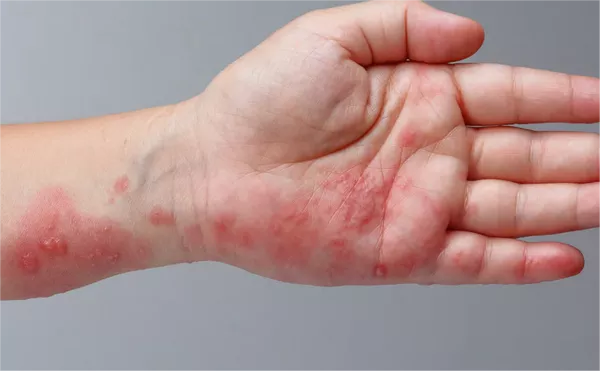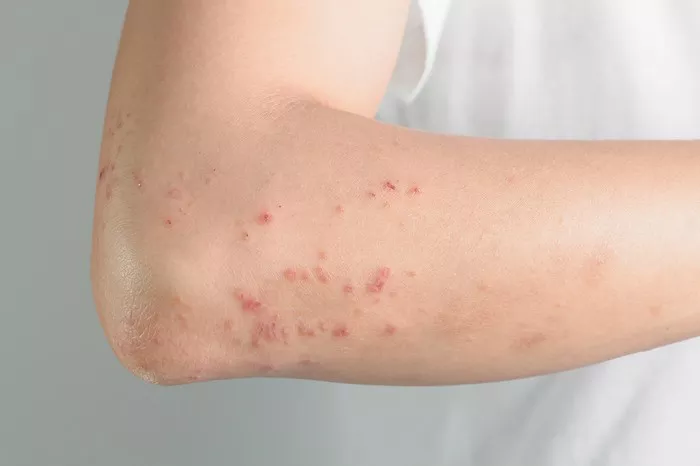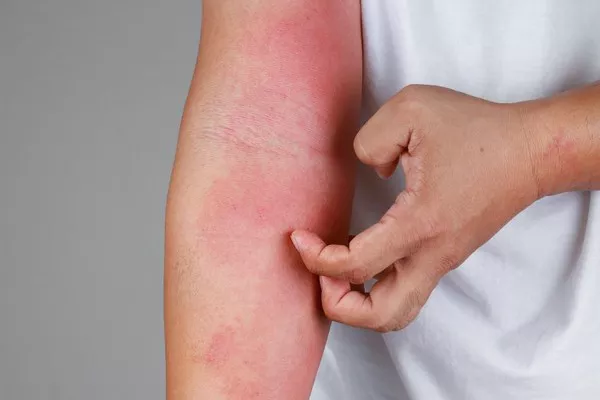Hives, medically known as urticaria, are a common skin condition characterized by raised, red, itchy welts or bumps. They can appear suddenly and often disappear just as quickly, but the itching and discomfort they cause can be quite distressing. This article explores various methods and treatments that can help alleviate hives, focusing on both home remedies and medical interventions.
Understanding Hives
Before delving into treatments, it’s important to understand what hives are and what causes them:
Causes: Hives can be triggered by various factors, including allergic reactions to food, medications, insect stings, or physical triggers like pressure or temperature changes. They can also be caused by infections, stress, or underlying medical conditions.
Symptoms: Symptoms of hives include raised, red welts that may vary in size, itchiness, and sometimes a burning sensation. They can appear anywhere on the body and often move around.
Home Remedies for Hives
1. Cold Compress
Applying a cold compress or ice pack to the affected area can help reduce inflammation and itching associated with hives. Cold constricts blood vessels, which can reduce the size and severity of hives.
2. Oatmeal Bath
A soothing oatmeal bath can provide relief from itching and inflammation. Colloidal oatmeal, available in pharmacies, can be added to lukewarm bathwater to soothe the skin.
3. Baking Soda Paste
Mixing baking soda with water to create a paste and applying it to hives can help relieve itching and inflammation. Leave it on for 10-15 minutes before rinsing off with cool water.
4. Aloe Vera Gel
Aloe vera has anti-inflammatory properties that can help soothe irritated skin. Applying pure aloe vera gel directly to hives can provide relief from itching and promote healing.
5. Apple Cider Vinegar
Diluting apple cider vinegar with water and applying it to hives with a cotton ball can help reduce itching and inflammation. Its antimicrobial properties may also help prevent infections.
6. OTC Antihistamines
Over-the-counter (OTC) antihistamines like cetirizine (Zyrtec), loratadine (Claritin), or diphenhydramine (Benadryl) can help block the histamine response that causes hives. Follow dosage instructions carefully.
7. Calamine Lotion
Calamine lotion can provide cooling relief and help dry out hives. Apply it directly to the affected areas and allow it to dry before gently rinsing off.
8. Avoid Triggers
Identifying and avoiding triggers that cause hives is essential. Keep a diary to track activities, foods, or medications that may trigger hives and try to avoid them.
Medical Treatments for Hives
1. Prescription Antihistamines
If OTC antihistamines are not effective, your doctor may prescribe stronger antihistamines or a combination of medications to control hives and reduce symptoms.
2. Corticosteroids
In cases of severe hives, oral corticosteroids like prednisone may be prescribed to reduce inflammation and itching. These are usually short-term treatments due to potential side effects.
3. Epinephrine
For severe allergic reactions causing hives (anaphylaxis), epinephrine injections (EpiPen) may be administered to quickly reduce symptoms and prevent complications.
4. Immunosuppressants
In cases of chronic hives that do not respond to other treatments, medications that suppress the immune system, such as cyclosporine, may be prescribed to reduce symptoms.
5. Anti-itch Creams
Topical creams containing menthol, pramoxine, or diphenhydramine can provide temporary relief from itching associated with hives.
6. Biologic Medications
For chronic idiopathic urticaria (hives without a known cause), biologic medications like omalizumab (Xolair) may be prescribed to target specific immune pathways involved in hives.
Lifestyle and Prevention Tips
1. Manage Stress
Stress can exacerbate hives. Practice stress-reducing techniques such as meditation, yoga, or deep breathing exercises to help manage stress levels.
2. Wear Loose Clothing
Avoid tight-fitting clothing that can irritate the skin and worsen hives. Opt for loose, breathable fabrics to minimize friction and allow airflow.
3. Cool Environment
Keep your living environment cool and well-ventilated, especially during hot weather, as heat can exacerbate hives.
4. Allergen Avoidance
If you suspect specific allergens trigger your hives, take steps to avoid them. This may include changing dietary habits, using hypoallergenic products, or avoiding known allergens.
5. Hydration
Drink plenty of water to keep your skin hydrated, which can help prevent dryness and irritation that may exacerbate hives.
SEE ALSO: How Long Does Drug-Induced Urticaria Last?
When to Seek Medical Attention
While most cases of hives can be managed with home remedies or over-the-counter medications, it’s important to seek medical attention if:
- Hives are accompanied by difficulty breathing, dizziness, or swelling of the face, lips, or throat (signs of anaphylaxis).
- Hives last longer than a few days or are recurrent despite treatment.
- Hives are severe, widespread, or affecting your daily activities.
Conclusion
Dealing with hives can be uncomfortable, but with the right approach, relief is attainable. Home remedies such as cold compresses, oatmeal baths, and antihistamines can help manage mild cases, while severe or persistent hives may require medical intervention with prescription medications. Understanding your triggers, practicing prevention techniques, and seeking medical advice when needed are key steps in effectively managing and reducing the impact of hives on your daily life. By incorporating these strategies, you can alleviate symptoms and promote healing, restoring comfort and skin health.
Related Topics:


























